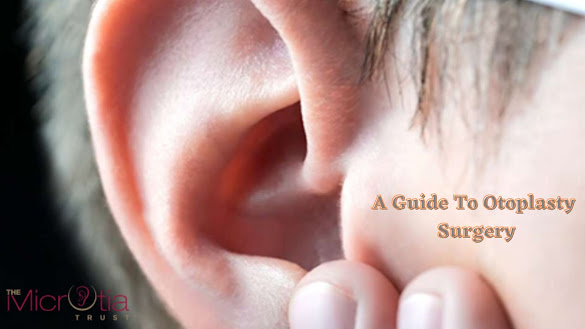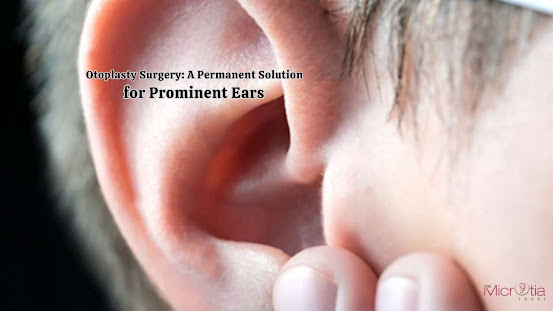A Guide To Otoplasty Surgery
Several deformities of the external ear can make the ear look bigger, smaller, bent, or abnormal in shape. The prominent ear is an autosomal dominant trait which means it is influenced by heredity and is present from birth. Prominent ears are also known as bat ears because the ears seem big and prominent on the face. It is an abnormally protruding human ear where the concha is large with poorly developed anti-helix and scapha. It may be unilateral or bilateral.
The concha is large with poorly developed antihelix and scapha. It is the result of malformation of cartilage during primitive ear development in the early phase of life. It does not cause any mental or physical abnormality but surely makes one conscious about their looks. Thus, the child grows to be less confident that affects their life. A child with prominent ears often has a burden of being unacceptable by peers that may get continued into adulthood.
The ear is formed from cartilage and skin. From birth, this cartilage tends to grow to form the outer structure of the ear, thus in the case of prominent ears, the cartilage grows at a larger rate. An ear is fully developed in about 3 years and the cartilage gets stronger by the age of 7-8 years. So, if a child has prominent ears, he/she should be checked and monitored for any internal or auditory loss. If just the external appearance of the ear is prominent it can be treated by the age of 3. It is good to treat it at an early age because the cartilage is soft and can easily be removed and healed.
Otoplasty or pinnaplasty is a surgical procedure that is designed to enhance the shape and size of the outer ear with a perfect elevation from the head. It is done by balancing the distance between the ear and the back of the head. This helps in correcting prominent ears or ears that stick out too far. This surgery can also be performed to correct asymmetries between two ears, and also normalize the appearance of the cauliflower ear. Otoplasty does not affect the ability to hear and does not cause any change in the facial ear proportions. Hence, it is completely safe and provides promising results.
The procedure of Otoplasty Surgery
Otoplasty surgery gives the best results if performed at any time from the age of seven because by this time, the ear cartilage is fully developed and is mature enough to be shaped, and also the child gets old enough to cooperate with the surgery and aftercare. The shape of the ear is revised by using permanent sutures to redefine the normal-looking curves.
The procedure is performed under general anesthesia for children and under local anesthesia for adults. Before starting with the procedure, proper markings are made around the ear. The surgical technique that corrects protruding ears helps create or increases the anti-helical fold and reduces enlarged conchal cartilage, as each ear’s anatomical problem requires its own solution. This permits the surgeon to restore the position of the ear and reshape the ear cartilage with sutures. Hence the folds are created during the surgery if they are absent. Also, excess cartilage is removed, and sutures are constructed to attach the ear to the skull.
The scars caused by otoplasty surgery are all positioned behind the ear so they are not visible to the naked eye. To improve the shape of the ear, a combination of either scraping the cartilage or using stitches may be used. Additional stitches may be used to pull the entire ear closer to the side of the head and correct the prominence of the ear lobes. After the procedure is completed, the incisions are closed, and a head bandage is applied to the patient.
After Surgery Care
Otoplasty is not a painful procedure, and generally, only pain-killer medications are required after the procedure. The head bandage is applied on the treated area and is left for a week, and stitches are removed. Afterward, the incisions are left open, and one can take a shower without any concern. The patient will need to wear a headband at night for a few weeks after the procedure.
Is Otoplasty Surgery Painful?
In every surgical procedure, there is mild to severe post-surgical pain. The otoplasty procedure is performed under general anesthesia so the patient does not feel any pain during the surgery. Post-surgery the patient might feel a little discomfort and pain in the operated area but that can be easily managed with over-the-counter painkillers and it only lasts a few days.
How Long Does One Have To Stay At The Hospital After The Surgery?
Otoplasty is a daycare surgery. So there is no need to stay at the hospital. The patients are discharged on the same day of the surgery.
How Long Does It Take To Show The Results Of Otoplasty Surgery?
The results of otoplasty surgery are immediate. Since it corrects the outer shape of the ear, everyone can see the correct shape of the ear. Although there might be some swelling in the treated area it gets settled in a few weeks. So, the patients are usually very happy as soon as the dressing is removed and they see the results.
At The Microtia Trust, children who suffer from microtia, prominent ears, or any other ear deformity are provided with medical support. The motive behind establishing this trust was Dr. Parag’s vision to make people aware that Microtia can be treated surgically. For the best results, an otoplasty surgery should be done by an experienced doctor. So, instead of finding “otoplasty surgery near me” one should focus on finding the “best otoplasty surgeon”.
Dr. Parag Telang is one of the most respected and experienced surgeons for otoplasty and other ear reconstruction surgeries globally. He is known for his surgical techniques and expertise that help children achieve natural-looking results. Hence, help them lead a normal life.



Comments
Post a Comment